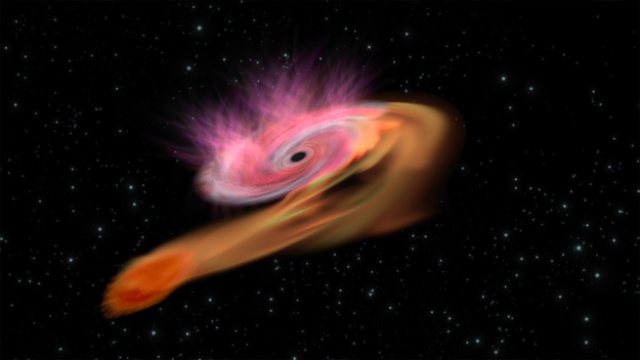Detailed processing and analysis of the available data will take "many years", said the scientific director of the Russian part of the project, Academician Rashid SyunyaevMOSCOW, March 7.
/tass/. Scientists were able to map the sky with more than half a million stars with corona brighter than the Sun, as well as almost 50 thousand clusters of galaxies thanks to surveys carried out by the space observatory "Spectrum-RG". This was reported to TASS by the scientific director of the Russian part of the Spectrum-RG project, Academician Rashid Syunyaev.
He clarified that before switching off the German eROSITA telescope (switching it to safe mode), the Spektr-RG observatory completed four full scans of the sky and about 30% of the fifth. Data processing is currently ongoing.
"First of all, the number of X-ray sources open in the whole sky has increased almost three times compared to the first survey. Now we have mapped about two million quasars, more than half a million stars with crowns hundreds and thousands of times brighter than the Sun, almost 50 thousand clusters of galaxies - the most massive gravitationally bound objects in the Universe, filled with "dark matter" and hot intergalactic gas, the X-ray radiation of which eROSITA sees", - noted Sunyaev.
According to the scientist, this number of X-ray sources is ten times higher than the number of objects known before the launch of Spektr-RG. And the detailed processing and analysis of the available data, Syunyaev stressed, will take "many years."
"We have so many X-ray photons that we are now mapping individual areas and even the entire sky in the emission lines of ions of various elements from oxygen to magnesium, neon and even iron. This makes it possible to study the enrichment, for example, of the interstellar medium during supernova explosions and to discover previously unknown remnants of supernovae that erupted tens of thousands of years ago, to investigate their properties," he added.
The Spektr-RG spacecraft was developed at the S. A. Lavochkin NPO (part of Roscosmos). It was created with the participation of Germany within the framework of the federal space program of Russia by order of the Russian Academy of Sciences. The observatory scans the sky in a wide energy range with high sensitivity and angular resolution. At the end of October 2019, it successfully reached the working orbit located at the L2 point.
The work of the observatory is managed by the S. A. Lavochkin NGO. The data from the telescopes are received at the deep space communication centers in Medvezhye Lakes, Ussuriysk, and Baikonur. Their processing is also carried out by graduate students and young scientists. In 2022, the German side practically turned off its telescope, switching it to safe mode due to the situation in Ukraine.

